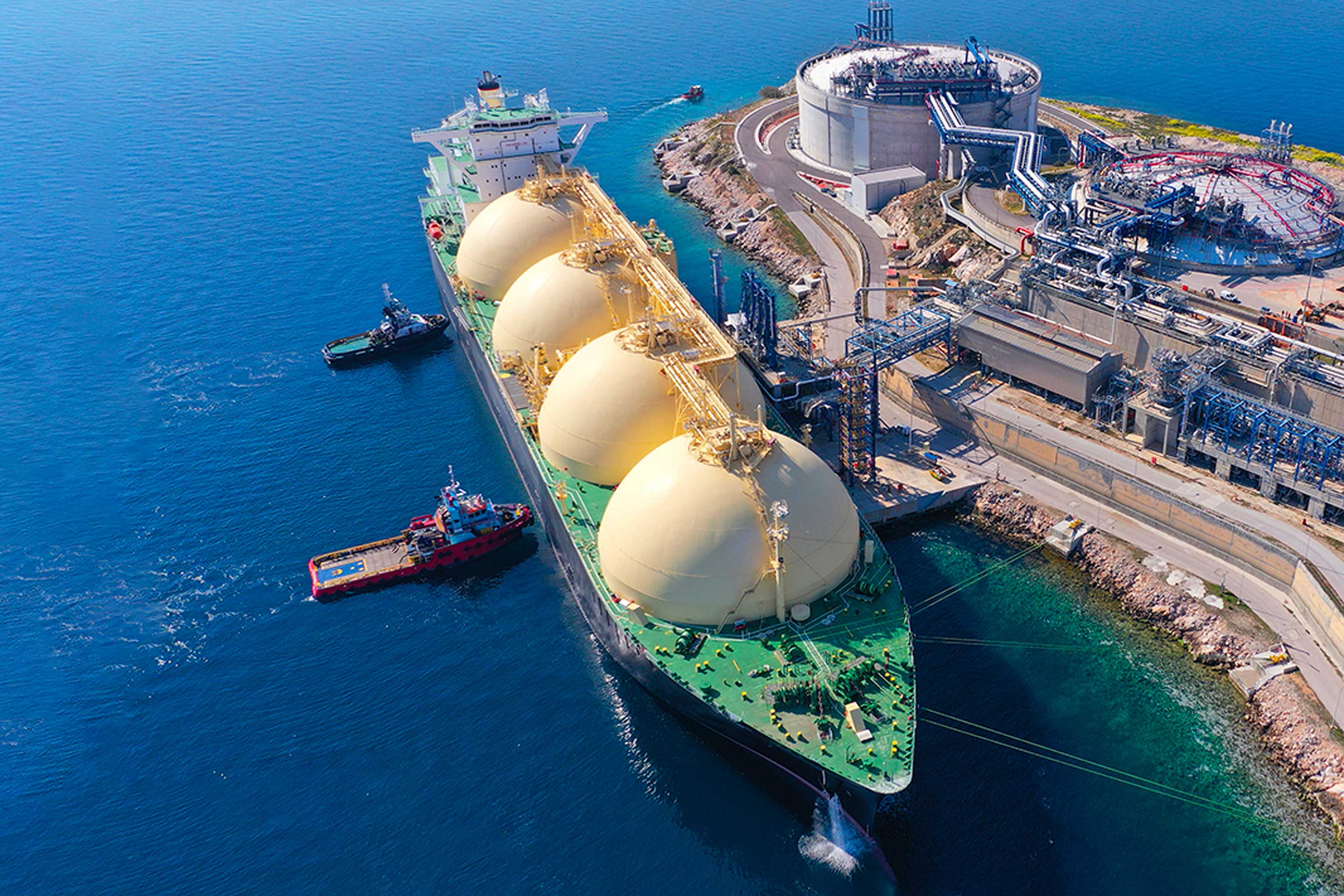The shipping industry predominantly revolves around one particular fuel at present – diesel – and we recently looked at some of the pros and cons of diesel. With ship owners and operators, governments and the maritime industry looking to meet stringent emissions targets over the coming years, however, diesel is likely to be phased out by alternative fuels, and LNG (Liquid Natural Gas) is a solution we’re already seeing in service. Read on, as we look at exactly what LNG has to offer.
As we head towards IMO 2050 and beyond, there are plenty of fuels that may eventually replace diesel and lead towards a net-zero future, including ammonia, methanol and hydrogen. There are still plenty of challenges on the way to net-zero fuels, however, including production techniques and costs, storage and infrastructure, which has led to the industry looking at other fuels in the interim, with LNG the most notable contender.
The positives of LNG
Although still a fossil fuel, LNG is actually 95% methane, and the combustion of natural gas generally results in emissions of water vapor and small amounts of carbon dioxide. This won’t result in net-zero shipping, but it will dramatically cut emissions over diesel-powered vessels while working towards closer targets such as IMO 2030.
LNG is a reasonable interim solution, not least because the associated CO2 emissions are 30 to 50% lower than those produced by traditional combustible fuels. This makes it an attractive option for ship operators who are looking to reduce their environmental impact.
LNG is a relatively efficient fuel when it comes to energy density, at least compared to green alternatives such as ammonia, methanol and hydrogen. This means ships will be able to travel further on a single tank of fuel, resulting in lower operating costs and increased profitability for ship operators.
There are also benefits when it comes to safety, with LNG proving a stable and safe fuel in comparison to alternative fossil fuels. In fact, according to Kinder Morgan, it actually has the best safety record of all common fuels, and because it evaporates quickly and dissipates into the atmosphere, it can reduce the risk of environmental issues in the event of spills.
The downsides
There are downsides to using LNG, however, which is why it’s only likely to be a stop-gap between current fossil fuels and alternatives such as ammonia, methanol and hydrogen.
Cost is one of the main disadvantages, at least compared to traditional fuels such as diesel. This may be negated by stringent regulations in future as the marine industry fights to cut emissions across the board.
The initial cost of buying LNG isn’t the only financial cost that ship owners and operators face; LNG requires specialized infrastructure and handling equipment, which can be costly to install and maintain. Owners and operators intending to run LNG will also need access to LNG bunkering facilities.
One of the biggest challenges adding to the cost of LNG is the fact it’s a cryogenic fuel, meaning it needs to be stored at extremely low temperatures (-83°C) in order to remain in liquid form. The need for such low temperatures makes LNG a more complex and expensive fuel to store, handle and transport, and it requires specialized training and expertise to ensure safe handling and storage.
Although LNG provides a higher volumetric energy density than hydrogen, ammonia and methanol, it also delivers around 40% lower volumetric energy density than diesel. This figure drops further when taking the specialized storage system into account, meaning ships will require larger fuel tanks and more fuel in order to travel the same distance, which can add weight and cost along with reducing efficiency.
The future for LNG
With a potential increase in costs and challenges when it comes to storage and infrastructure, it’s clear that LNG isn’t the best fuel for everybody, but it does deliver enough benefits to provide an interim solution for many ship owners and operators as we move towards more sustainable shipping.
LNG already provides a cleaner, safer and, in some ways, more efficient alternative to traditional fossil fuels, and it’s also likely to prove cheaper than future fuels, at least in the short term. This will help LNG to play an increasingly important role as the maritime industry continues to look for ways to reduce its environmental impact.
The downsides mean LNG is likely to remain a temporary solution and we’ll be looking at alternatives such as ammonia, methanol and hydrogen in the next articles in this series.














